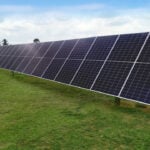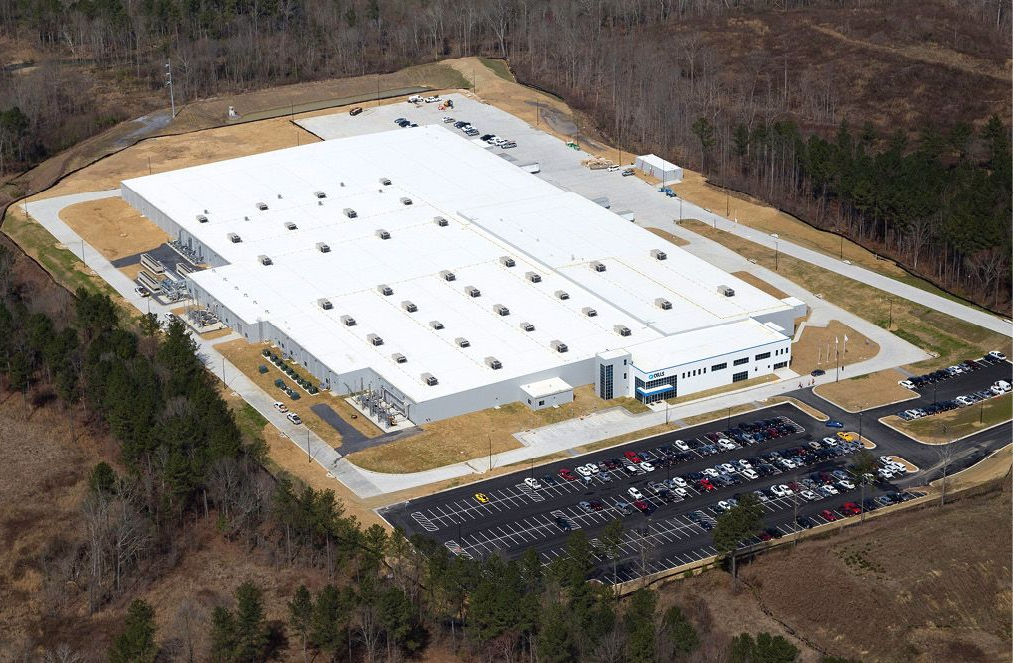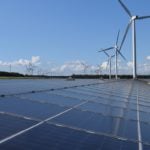Latest
News , Editors’ Blog , Features
Features , Interviews , Long Reads
The Automated Hail Stow Solution can work in tandem with FTC Solar’s SUNOPS operations and management platform. Image: FTC Solar
US solar tracker manufacturer FTC Solar has launched its Automated Hail Stow Solution, an automated programme to stow PV modules ahead of hailstorms, to minimise damage from extreme weather events.
The programme, delivered in tandem with VDE Americas, works with FTC’s existing operations and management platform, SUNOPS, to stow modules at times when they are most at risk of hail damage. When exposed to a hail risk, modules are stowed at the maximum angle allowed by the tracker, and away from prevailing winds, to minimise the damage that can be caused by hailstorms.
This article requires Premium Subscription Basic (FREE) Subscription
Unlock unlimited access for 12 whole months of distinctive global analysis
Photovoltaics International is now included.
Regular insight and analysis of the industry’s biggest developments
In-depth interviews with the industry’s leading figures
Unlimited digital access to the PV Tech Power journal catalogue
Unlimited digital access to the Photovoltaics International journal catalogue
Access to more than 1,000 technical papers
Discounts on Solar Media’s portfolio of events, in-person and virtual
Or continue reading this article for free
The solution uses meteorological data to assess when hailstorms are taking place, and allows uses to customise how much hail risk they want to expose their modules to, before they are stowed. Users can also choose whether modules are stored automatically, or manually, and receive notifications to warn of impending hail events.
“By combining advanced technology with meteorological insights, we aim to provide our customers with greater peace of mind and protection for their solar assets,” said Andrew Morse, senior director of Software at FTC Solar.
The global solar sector has been made more aware of the potential damage that extreme weather, notably hailstorms, can to do projects, following the falling of “golf ball-sized” hailstorms on the Fighting Jays solar project in Texas earlier this year.
A report from insurers GCube found that, between 2018 and 2023, the average insurance claim made at solar projects due to hail damage cost around US$58.4 million, and hail accounted for 54.21% of incurred costs of total solar loss claims, as solar projects grow larger in scale, and become more exposed to extreme weather events.
Jason Kaminsky, CEO at kWh Analytics, told PV Tech Premium that, in response to the Fighting Jays incident, there is a greater awareness of the insurance risk that weather can pose to solar projects. He noted that “the biggest challenge is operationalising a lot of the insights that we’ve seen,” and FTC Solar will be optimistic that its integration of its latest autonomous programme with an existing operations and management tool will help this process of integrating data into operational performance.
San Francisco Bay Area, USA
PV Tech has been running an annual PV CellTech Conference since 2016. PV CellTech USA, on 8-9 October 2024 is our second PV CellTech conference dedicated to the U.S. manufacturing sector. The event in 2023 was a sell out success and 2024 will once again gather the key stakeholders from PV manufacturing, equipment/materials, policy-making and strategy, capital equipment investment and all interested downstream channels and third-party entities. The goal is simple: to map out PV manufacturing in the U.S. out to 2030 and beyond.
PV Tech has been running PV ModuleTech Conferences since 2017. PV ModuleTech USA, on 17-18 June 2025, will be our fourth PV ModulelTech conference dedicated to the U.S. utility scale solar sector. The event will gather the key stakeholders from solar developers, solar asset owners and investors, PV manufacturing, policy-making and and all interested downstream channels and third-party entities. The goal is simple: to map out the PV module supply channels to the U.S. out to 2026 and beyond.
americas , automation , extreme weather , finance , ftc solar , hail , insurance , operations and maintenance , risk , stowing , sunops , us , vde americas , weather
Read Next
Korean-owned solar manufacturer Qcells has commissioned a 50MW/200MWh solar-plus-storage project in California.
Ember Climate suggests that the EU will need to invest at least €58.4 billion a year on transmission and distribution grids.
Solar manufacturer Qcells has partnered with Lumet, a specialist in solar cell metallisation technology, to reduce the cost of its cell production lines.
A new report from the Lawrence Berkeley National Laboratory found that new solar and wind capacity drove US$249 billion of economic benefits.
Maxeon Solar Technologies posted net losses of US$14.87 million in its Q1 2024 financial results. It also announced that its future utility-scale solar business will be “focused exclusively on the US”.
Renewables developer EDP Renewables North America has built a 157MW solar PV project in Arkansas, marking the company’s entry into the state.
Subscribe to Newsletter
Most Read
Features , Interviews , Long Reads
Upcoming Events
3:00 PM (BST) / 4:00 PM (CEST)
Sands Expo and Convention Centre, Singapore
https://www.pv-tech.org/ftc-solar-launches-autonomous-hail-stow-programme/





